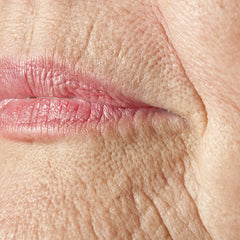Cellulite is a common cosmetic concern that affects both men and women, causing dimpled or lumpy skin texture, mainly on the thighs, buttocks, and abdomen. While cellulite is not a serious medical condition, it can affect self-confidence and body image. In this post, we will explore the causes of cellulite, discuss effective treatment options and provide recommendations on how to prevent it occurring in the first place. Summer bodies are made in the winter, so now is the perfect time to implement strategies to improve your skin health!
- Causes of Cellulite
Cellulite is primarily caused by the interaction between connective tissue, fat deposits, and skin. Several factors contribute to the development of cellulite:
- a) Hormonal Factors: Hormones like estrogen, insulin, noradrenaline, thyroid hormones and prolactin play a significant role in the formation of cellulite. Hormonal changes or imbalances can weaken the connective tissue, reducing blood flow, which contributes to the appearance of cellulite.
- b) Genetics: Genetic factors can also influence the development of cellulite. Certain genes may predispose individuals to have a higher likelihood of developing cellulite due to specific fat distribution patterns and weaker connective tissue structures.
- c) Lifestyle Factors: Sedentary lifestyle, poor dietary habits, smoking and excessive alcohol consumption can contribute to the formation of cellulite. Lack of exercise and muscle tone can lead to fat accumulation and weakened connective tissue, exacerbating the appearance of cellulite.
- d) Poor Circulation: Reduced blood flow and lymphatic drainage can contribute to the accumulation of toxins and fluid retention, which may worsen the appearance of cellulite.
- Effective Treatment Options for Cellulite
While it may not be possible to completely eliminate cellulite, several treatment options can help improve its appearance:
- a) Topical Treatments: Lotions, creams & exfoliants containing ingredients such as retinol, caffeine, and antioxidants can help temporarily tighten the skin and reduce the appearance of cellulite. However, the effects are usually temporary, and consistent application is required for maintenance. Skin needling has shown some efficacy is improving skin tone and texture, but is only recommended for small areas at a time, due to the required application of numbing cream.
- b) Massage Therapy: Techniques such as lymphatic drainage massage, myotherapy and deep tissue massage can help improve blood circulation, reduce fluid retention, and temporarily smooth the skin's appearance and release the fascia. Dry body brushing is also a simple, easy treatment you can do yourself at home, please see our earlier post: https://beautyboosters.com.au/blogs/news/dry-body-brushing-what-is-it-and-what-are-its-benefits
- c) Non-Invasive Procedures: Procedures such as radiofrequency, laser therapy, acoustic wave therapy, and vacuum-assisted precise tissue release (VATPR) can help stimulate collagen production, improve skin elasticity, reduce fluid retention all of which can help reduce the appearance of cellulite.
- d) Medical Procedures: Invasive procedures such as subcision, laser-assisted liposuction, and cellulite-specific injectables can provide more dramatic and long-lasting results. However, these procedures carry potential risks and should be discussed with a qualified medical professional.
- Preventing Cellulite: Tips for a Healthy Lifestyle
Prevention is key to reducing the likelihood of developing cellulite. Here are some lifestyle tips that can help:
- a) Maintain a Healthy Diet: Focus on a balanced diet that includes fruits, vegetables, whole grains, lean proteins, and healthy fats. Limit your intake of processed foods, sugary snacks, and excessive salt, as they can contribute to fluid retention and fat accumulation.
- b) Regular Exercise: Engage in a combination of cardiovascular exercises and strength training to maintain a healthy weight, improve circulation, and tone your muscles. Exercises targeting the areas prone to cellulite, such as squats and lunges, can be particularly beneficial.
- c) Stay Hydrated: Drink an adequate amount of water daily to support optimal blood circulation and promote toxin elimination from the body.
- d) Avoid Smoking and Excessive Alcohol Consumption: These habits can weaken the connective tissue, disrupt collagen production, and impair circulation, all of which can contribute to cellulite formation.
- e) Wear Comfortable Clothing: Avoid tight clothing
 Skip to content
Skip to content







